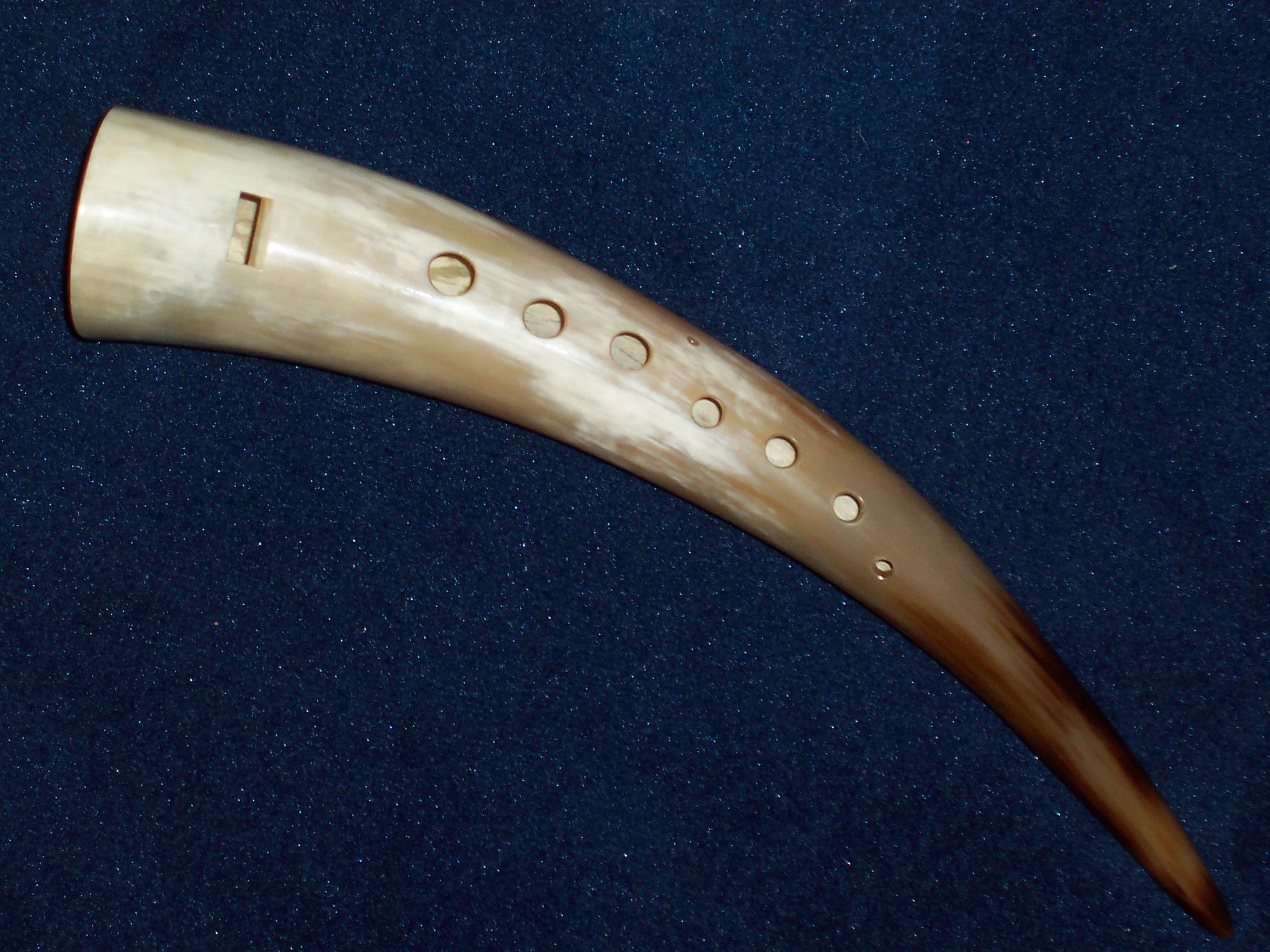Instruments

Gemshorn Alt
Instruments used to perform medieval music still exist, but in different forms. The flute was once made of wood rather than silver or other metal, and could be made as a side-blown or end-blown instrument. The recorder has more or less retained its past form. The gemshorn is similar to the recorder in having finger holes on its front, though it is actually a member of the ocarina family. One of the flute’s predecessors, the pan flute, was popular in medieval times, and is possibly of Hellenic origin. This instrument’s pipes were made of wood, and were graduated in length to produce different pitches.
Medieval music uses many plucked string instruments like the lute, mandore, gittern and psaltery. The dulcimers, similar in structure to the psaltery and zither, were originally plucked, but became struck in the fourteenth century after the arrival of the new technology that made metal strings possible.
The bowed lyra of the Byzantine Empire was the first recorded European bowed string instrument. The Persian geographer Ibn Khurradadhbih of the ninth century (d. 911) cited the Byzantine lyra, in his lexicographical discussion of instruments as a bowed instrument equivalent to the Arab rabāb and typical instrument of the Byzantines along with the urghun (organ), shilyani (probably a type of harp or lyre) and the salandj (probably a bagpipe). The hurdy-gurdy was (and still is) a mechanical violin using a rosined wooden wheel attached to a crank to “bow” its strings. Instruments without sound boxes like the jaw harp were also popular in the time. Early versions of the organ, fiddle (or vielle), and trombone (called the sackbut) existed.
Genres
Medieval music was both sacred and secular. During the earlier medieval period, the liturgical genre, predominantly Gregorian chant, was monophonic. Polyphonic genres began to develop during the high medieval era, becoming prevalent by the later thirteenth and early fourteenth century. The development of such forms is often associated with the Ars nova.
REQUIRED READING: Overview of medieval musical genres, developments, compositions, and composers.
Candela Citations
- Overview of Medieval Music. Provided by: Lumen Learning. Located at: https://courses.lumenlearning.com/suny-musicappreciationtheory/chapter/overview-of-medieval-music/. License: CC BY-SA: Attribution-ShareAlike

